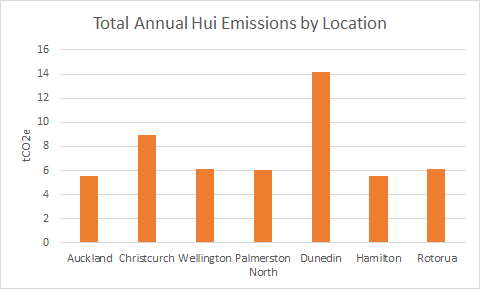Investigators' Blog
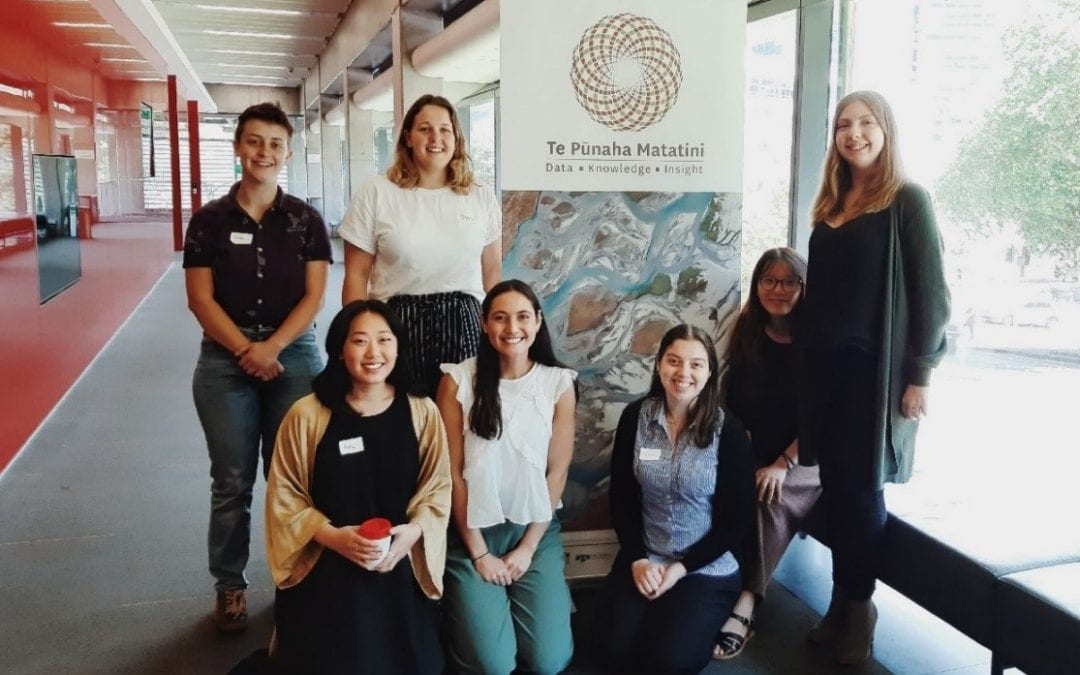
Young achievers: Our 2019-20 student summer interns
Several New Zealand university students took up the opportunity to join Te Pūnaha Matatini’s 2019-20 summer internship programme, with paid 10-week placements working on research projects with a variety of our partner organisations.
Once again, our student interns had a range of backgrounds and came from all parts of the country, but they all shared a common desire to make the world a better place through the application and analysis of data, while gaining on-the-job experience.
“This programme is now its fifth year of operation and each year we have had an amazing group of students take up some fantastic opportunities with our partners,” said Kathryn Morgan, Research Operations Coordinator at Te Pūnaha Matatini. “The core objectives remain the same as previous years – providing students with invaluable data analytics experience and insights into working for organisations in the real world.”
The 2019-20 programme featured some very interesting projects involving a mix of both public and private sector work. Here we profile a few of the projects our interns worked on:
Developing complex systems models – Ministry for the Environment
A team of three interns in our programme were placed with the Ministry for the Environment (MfE) where they piloted a complex systems approach to modelling policy problems.
Shnece Duncan, a University of Canterbury Master of Commerce in Economics student, Ellena Black, a University of Auckland Honours degree graduate in Applied Mathematics, and Quyen Nguyen, a University of Otago Finance PhD student, looked at how various aspects of New Zealand’s economy, financial system and environment could be more effectively modelled to improve MfE policy.
“Using a complex systems approach, the models we developed aimed to better understand the cumulative impacts of multiple policies and stressors on the environment and people. As an example, we developed a simulation model that explored the on-farm adoption of new practices in New Zealand. Each farmer was modelled as a separate agent within neighbourhood and social networks. Each farm was modelled to be at a different life-cycle stage, producing either sheep, beef, dairy, or forestry products, with different decision-making strategies. We would like to extend a huge thank you to the MfE, especially senior analyst Jack Bisset, for their support and guidance throughout our internship.”
Analysis of a complex organisation’s carbon footprint – Te Pūnaha Matatini
Two of our interns analysed data on Te Pūnaha Matatini’s carbon emissions over the past few years to better understand our past and current performance in this area.
Ebba Olsen, a University of Auckland Bachelor of Science student majoring in Mathematics and Logic and Computation, and Kahu Te Kani, a University of Canterbury Bachelor of Science graduate with a major in Mathematics and Economics, produced a detailed report that will be used to guide future Te Pūnaha Matatini decisions regarding the need for staff to fly in particular.
“As with any organisation we could lower our CO2 emissions if we simply flew less,” wrote Ebba and Kahu. “We could hold more meetings remotely, for example over Skype, or use other more environmentally-friendly modes of transportation – if travelling is absolutely necessary. However, an obvious hurdle in using these other modes of transportation is the lack of efficient inter-city transport options across New Zealand.”
Ebba’s and Kahu’s internship supervisor, Te Pūnaha Matatini Director Shaun Hendy, is a well-known advocate for flying less to reduce our impact on the climate, and has written extensively on the subject.
“We would encourage other organisations to conduct a similar analysis of their CO2 emissions and to reduce them where possible,” said Shaun.
Creating an app to enrich the network visualisation experience – Nebula Data
Shih-Hao (Samuel) Chen, a University of Auckland Bachelor of Engineering study majoring in software engineering, worked with Te Pūnaha Matatini start-up Nebula Data during his summer internship.
The main objective of this project was to develop an application that would provide analysts with an enhanced way to see (visualise) networks.
“Networks arise in all shapes and forms in our everyday lives,” said Samuel. “However, [their features] are challenging to interpret, and transforming the dataset into a useful visualisation relies on inflexible third-party applications. We wanted to build a supportive, customisable tool that would enable data analysts to uncover new observations.”
Further details about individual and team projects
Following the completion of their placements, some of our interns wrote about their experiences and their detailed reports are available on Te Pūnaha Matatini’s website. Read more about the work of Shnece, Ellena and Quyen with MfE, Kahu and Ebba with Te Pūnaha Matatini, and Samuel with Nebula Data.

Women remain under represented at top levels of academia
New research published in the journal Education Sciences suggests that women remain disproportionately under-represented in senior academic positions within New Zealand universities.
The study has shown that from 2012 to 2017 there was little if any improvement in gender parity in senior roles at all eight or our universities – the University of Auckland, Auckland University of Technology, University of Waikato, Massey University, Victoria University of Wellington, University of Canterbury, Lincoln University and University of Otago.
Existing gender diversity programmes appear to have had limited impact
“We’re still seeing an absence of women at the higher levels of academic employment across New Zealand universities,” says the study’s lead author Dr Leilani Walker, Te Pūnaha Matatini Associate Investigator.
“There are disproportionately fewer women in senior lecturer, professor positions and so forth, and this is in spite of various programmes that have been developed to try to improve the situation. Based on the data we have, it looks like women are proceeding up the academic promotion ladder at a slower rate than their male colleagues.”
Most of our universities, except for the University of Canterbury and Lincoln University, had equitable proportions of women in their academic work forces in 2017. However, the study found that men dominated the more senior employment roles, making up 64-69% of Associate Professors/Heads of Department and 74%-81% of Professors/Deans – from 2012 to 2017.
Consistent with previous research, gender disparities in senior university roles within New Zealand could not be explained by male and female age difference distributions.
Potential need for institutions to review their promotion processes
These findings may provide a timely opportunity for New Zealand’s academic institutions to review and update their processes around hiring and promotion, says Dr Walker.
“We have a variety of programmes at New Zealand universities that try and help promote the careers of women into more senior positions, but it’s not really apparent in our minds whether they work,” Dr Walker says.
“We also question the extent to which just increasing the number of people present can create a culture change. Should we instead be starting to look at ways of engendering a culture tilt, rather than just getting more bodies in the room?”
“Perhaps we should be looking at existing models being used to judge success,” says Dr Walker. “The careers of female academics are often disrupted by life’s other priorities – for example, parental leave or to care for parents – and such interruptions can impact their research performance. If New Zealand universities continue to measure academic success based on the assumption of a linear, straight-forward career path, then any deviations will continue to disadvantage women.”
About the study authors
Dr Walker’s co-authors on this paper are all investigators at Te Pūnaha Matatini. They include Dr Tara McAllister (Te Aitanga ā Māhaki, Ngāti Porou), Research Fellow, School of Biological Sciences at the University of Auckland, Dr Isabelle Sin, Research Fellow, Motu Economic and Public Policy Research in Wellington, Associate Professor Cate Macinnis-Ng, School of Biological Sciences at the University of Auckland, and Kate Hannah, Deputy Director, Equity & Diversity Te Pūnaha Matatini.
Feature photo by Clay Banks on Unsplash.
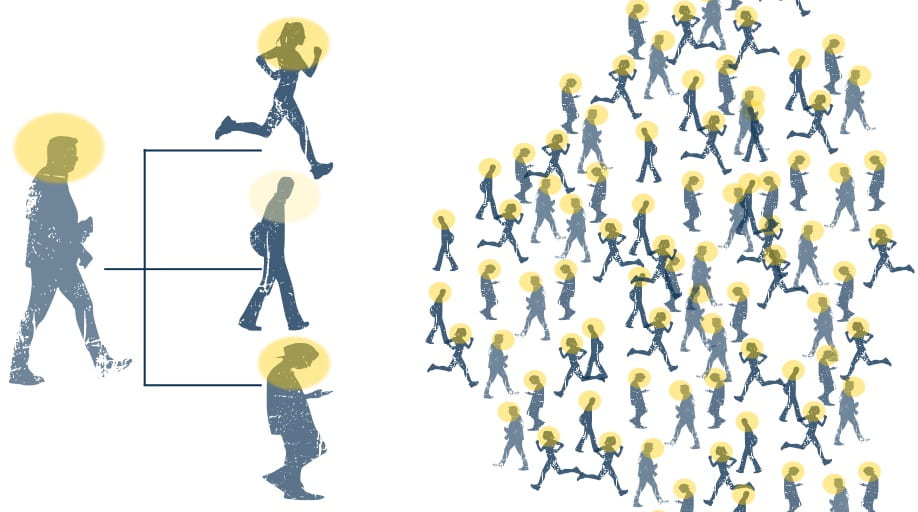
New interactive app simulates COVID-19 spread
A New Zealand-specific interactive epidemic simulation app developed by Dr Audrey Lustig, Associate Investigator at Te Pūnaha Matatini, and hosted by the University of Auckland’s Centre for eResearch, has just been released.
Called the COVID-19 Take Control simulator, the app illustrates the effects of hygiene and physical distancing measures that all Kiwis are undertaking to control the spread of COVID-19. One of the app’s key features is that it allows the user to see the effects higher and lower collective cooperation with policies aimed at breaking the chain of transmission.
Try it out now! Check out the app here.
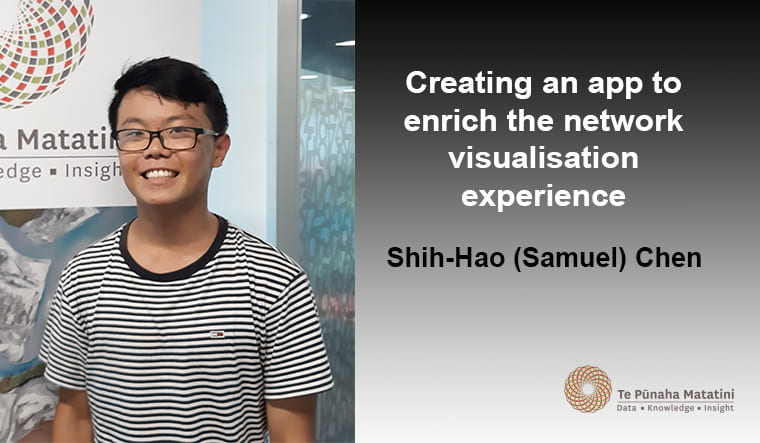
Creating an app to enrich the network visualisation experience
Te Pūnaha Matatini intern Shih-Hao (Samuel) Chen talks about his work with Nebula Data over the 2019-20 summer developing a tool that provides enhanced network analysis capabilities.
By Shih-Hao (Samuel) Chen
Networks arise in all shapes and forms in our everyday lives, and their features can provide new information to its respective topic. However, a list of nodes and edges alone is challenging to interpret, and transforming the dataset into a useful visualisation relies on inflexible third-party applications. We wanted to build a supportive, customisable tool that would enable data analysts to uncover new observations.
How does one analyse networks?
Networks are a group of nodes (things) and edges (relationships). The analysis of these networks provides answers to questions that otherwise would be difficult to answer, such as which bus stops have the most traffic, or which characters appear the most in a movie.
The question then arises – how does one analyse networks? The answer is to use a network visualisation and processing application. Gephi is a well-known application that provides this functionality, but Gephi has limitations in terms of user controllability. Our task was to produce an alternative software, but with more flexibility and control from an analytical perspective. For example, our product may offer more colouring schemes, alternative algorithms or additional forces.
When presented with a list of nodes and edges, a computer has no intuitive method of drawing the network. After all, the visualisation is purely aesthetic. The solution is to implement a force-directed algorithm that transforms the nodes into a “natural” layout. We can see the result in Figure 1:
Figure 1. Demonstration of a force-directed network in action.
The network in this visualisation is slowly untangling, allowing us to identify central nodes and clusters.
We created our application hoping for flexibility and customisation. Upon further reading, we found that the attraction/repulsion ratio between the nodes determines the resultant network shape. As shown in Figure 2 below, we can see how the visualisation algorithm can dramatise clustering by changing the forces alone.
Figure 2. Three different attraction/repulsion force ratios, and its resultant shapes.
Although these observations are informative, metrics and values help form reliable claims on these networks. By colouring the nodes based on some measure, the application presents the information in a reader-friendly way. Figure 3 below illustrates two examples of analyses that the app supports:
Figure 3. Katz (left) and Betweenness (right) Centrality, highlighted by the colouring of the nodes.
Finally, our application also provides a time-lapse feature, where we can observe how graphs change over time. The insertion/removal of nodes and edges will change the shape of the network and analysts can use these changes to make observations.
Where to next?
Although these features are incredibly useful for uncovering hidden stories of networks, there are plenty of features that could provide further insight into the relationships around us. Community detection, for example, is an exciting field that groups nodes of high connectivity together. There are also visual features, such as nodes-overlap prevention, that would improve readability.
Author
Shih-Hao (Samuel) Chen is currently studying a Bachelors of Engineering, specialising in Software Engineering. Samuel enjoys problem-solving and is incredibly fascinated with the complex nature of algorithms.
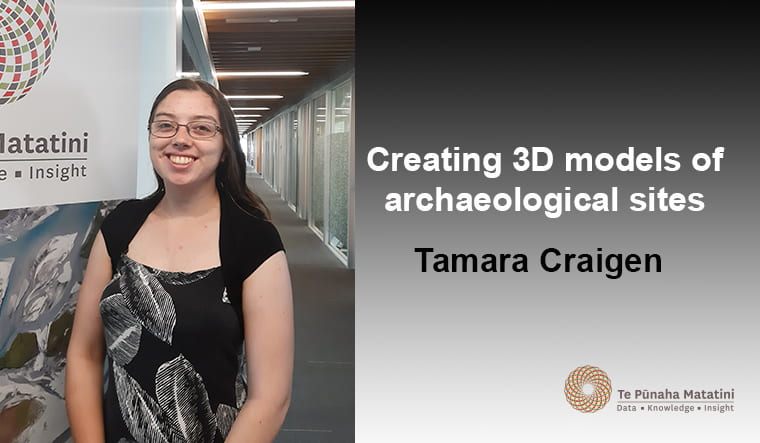
Creating 3D models of archaeological sites
University of Auckland student Tamara Craigen on her summer research experience with Te Pūnaha Matatini, 3D modelling archaeological sites on Ahuahu (Great Mercury Island).
Tamara Craigen
Ahuahu (Great Mercury Island) has been an area of archaeological interest for many years. The island is part of the Mercury Islands, off the coast of the Coromandel Peninsula. A multidisciplinary team from the University of Auckland and the Auckland War Memorial Museum has been involved in a long-term project in coordination with the island’s landowners Sir Michael Fay and David Richwhite and the local iwi, Ngāti Hei.
A component of this project directed by Professor Thegn Ladefoged has and continues to develop understanding of how Māori interacted with the land, especially through the ideas of kaitiakitanga and ecodynamics. Kaitiakitanga is a term that encompasses various facets of guardianship, including practices and values, while ecodynamics refers to how humans and ecological systems interact.
One area of interest on the island centres around a swamp and nearby alignments of rocks. This location resembles known Māori taro and kumara garden sites in other parts of New Zealand, prompting investigation.
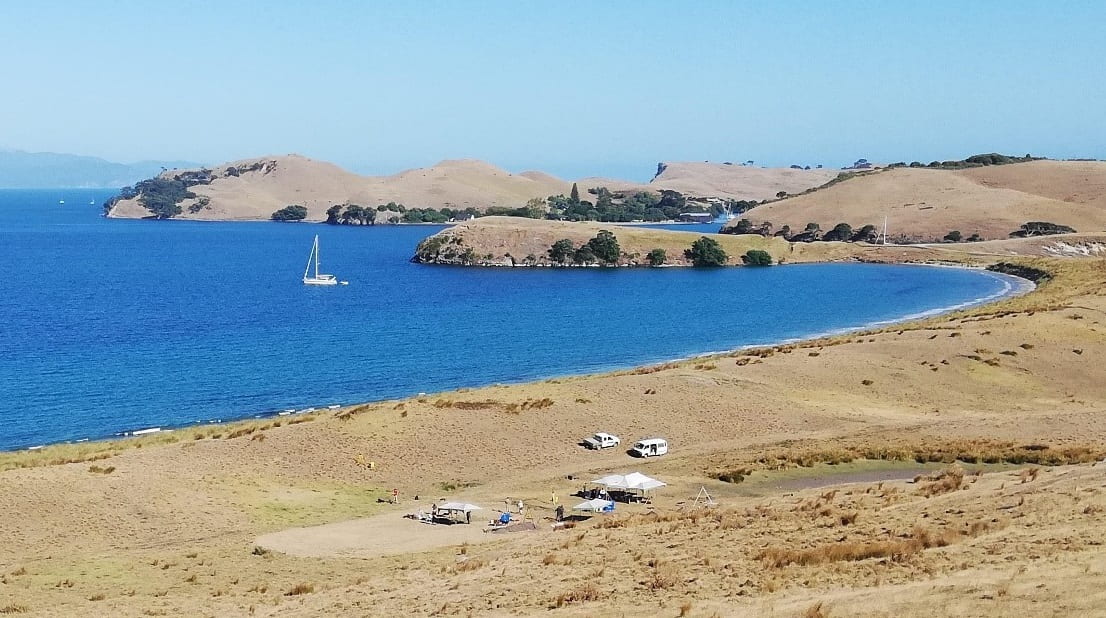
A view of the archaeological area at Ahuahu (Great Mercury Island) that Tamara and her colleagues at the University of Auckland worked on over the 2019-20 summer. Photo: Andy Hopping.
Various archaeological methods have been undertaken, including excavations, pollen analysis and coring. The latter is the primary source for my project. D-section coring involves inserting a tool into the ground that takes a sample of the various sediments and dirt layers that make up the landscape, called stratigraphy. These samples can be taken in transects across an area of interest to develop a stratigraphic profile.
Over my ten-week contribution to the ongoing project, I have been working to develop the stratigraphic profiles from this garden site into 3D models of the underlying geomorphology and archaeological deposits. This has involved researching how other projects have used 3D modelling for analytical use instead of for visualisation as well as learning to use the relevant modelling and mapping software.
Digitising data from last year’s field work has also been an important aspect in preparing the models. The models my project generates will be used to understand the formation of this landscape and garden and help plan future archaeological work in the area.
Author
Tamara Craigen is a Natalie Blair Memorial Summer Scholar from the University of Auckland who has been supported by Te Pūnaha Matatini over her ten-week project. Tamara is currently working towards a BA/BSc in Anthropology and Biological Sciences. This project has been an excellent opportunity for her to develop her skills both in her field and within a wider research community.
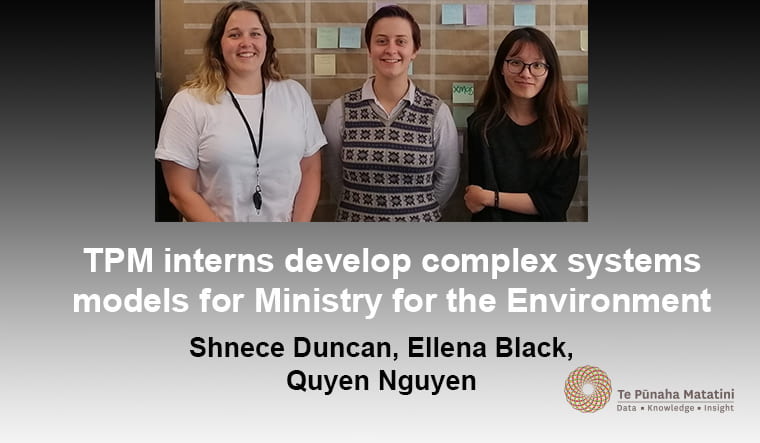
Te Pūnaha Matatini interns at Ministry for the Environment
Three Te Pūnaha Matatini interns report on their 2019-20 summer placement with the Ministry for the Environment, where they piloted a complex systems approach to modelling policy problems.
Shnece Duncan, Ellena Black and Quyen Nguyen
During our internship, we looked at how various aspects of the real economy, the financial system and the environment could be more effectively modelled in order to improve the Ministry for the Environment’s (MfE’s) ability to analyse certain policy issues.
Using a complex systems approach, the models we developed aimed to better understand the cumulative impacts of multiple policies and stressors on the environment and people.
As an example, we developed a simulation model that explored the on-farm adoption of new practices in New Zealand. Each farmer was modelled as a separate agent within neighbourhood and social networks. The farmers were designed to be at different life-cycle stages, producing either sheep, beef, dairy or forestry products, with different decision-making strategies (environmentally friendly or profit-oriented).
During our 10-week internship at MfE, we gained invaluable insights about complex systems and complexity economics. We also gained a better understanding of agent-based models (ABMs), the benefits of ABMs over standard CGE models, and how to code them.
We would like to extend a huge thank you to Te Pūnaha Matatini for this opportunity and also to the MfE, especially senior analyst Jack Bisset, for their support and guidance throughout our internship.
Authors
Shnece Duncan is studying towards a Master of Commerce in Economics at the University of Canterbury. She is excited to apply her background in economics in a real-world situation.
Ellena Black has recently completed an Honours degree in Applied Mathematics at the University of Auckland. Her project involved creating an Agent-Based Model of gas particles that could move around in space and react on a catalytic surface.
Quyen Nguyen is in her second year Finance PhD programme at the University of Otago. Her research interest focuses on the impact of climate change on US loan portfolio valuations. She is interested in applying data science to climate finance.
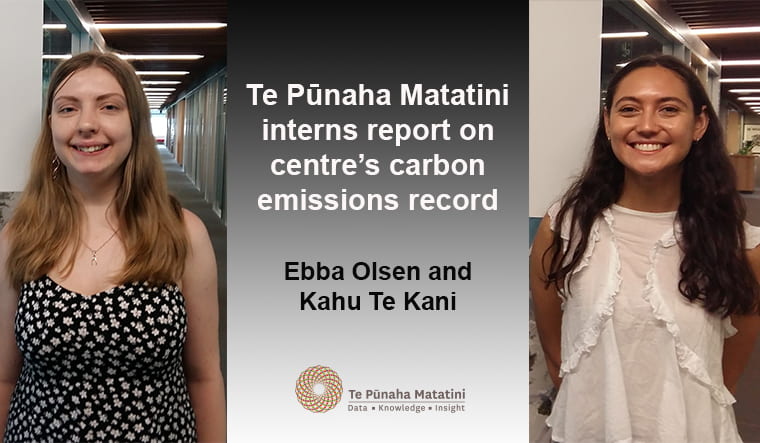
Te Pūnaha Matatini interns report on centre’s carbon emissions
By Ebba Olsen and Kahu Te Kani
Te Pūnaha Matatini (TPM) plans to introduce carbon emission reductions as a KPI from 2021 onwards. To prepare, we have analysed our carbon emissions (CO2e) from staff air travel over the past few years to better understand the centre’s past and current performance.
We calculated emissions using the Toitū carbon calculator, from all flight itineraries paid for by TPM between the years 2017 to 2019. This indicates that TPM’s air travel produced 2.04, 2.99 and 3.77 tonnes of CO2e per full-time equivalent (FTE) staff member in 2017, 2018 and 2019, respectively.
To put these numbers in perspective, our emissions were equivalent to each FTE staff member flying from Auckland to Brisbane and back twice in 2017, Auckland to Honolulu and back in 2018, and Auckland to Tokyo and back in 2019.
In 2017, TPM produced similar levels of emissions per FTE staff member compared with Victoria University of Wellington, which reported 2.00 tonnes of carbon per FTE emitted due to air travel. Yet Victoria’s emissions grew very little in 2018, sitting at 2.24 tonnes of CO2e per FTE.
TPM’s rising carbon emissions can be explained after a detailed examination of all the different reasons for staff flying (see figure below).
This analysis shows a significant increase in 2019, largely due to the “Other” category, which grew dramatically in 2019 because of the need for our investigators to attend a higher number of events related to our reapplication for TEC funding throughout the year.
As TPM is a young organisation (founded in 2015), these increases from year to year can be attributed in part to our growth, as a result of TPM attending/holding more and more events across the country. In turn, our demand for air travel as an organisation has risen, increasing our CO2 emissions.
Minimising our Annual Hui emissions
As one might expect, the largest contributing factor to total carbon emissions each year has been our Annual Hui, when the majority of our staff from around the country gather in one location. This event contributed 0.566, 0.917 and 0.748 tonnes of CO2e per FTE in 2017, 2018 and 2019, respectively.
These changes in emissions may be credited to the changes in location for the Annual Hui, as it was held in Auckland in 2017 and 2019, but was held in Christchurch in 2018.
Does this mean we should consider giving up our Hui altogether and opting for a Skype instead? Perhaps not. The Annual Hui provides an opportunity for TPM staff to come together and meet face to face, to update, discuss, and plan our research projects in a conference like manner. It is an important aspect of cultivating research excellence throughout the organisation.
Since Auckland has always been the largest hub for TPM investigators, this has meant there was an increase in the number of flights needed in 2018 compared to other years, as more investigators had to travel across the country. The distribution of our investigators as of 2019 is shown in the diagram below.
Assuming all TPM investigators attend the Annual Hui via aeroplane, we have compiled data to show the total carbon emissions produced from air travel due to this event, if it were to be held in each residing city of our investigators (see graph below).
What is quite clear is that Dunedin and Christchurch are the least efficient places to host our Annual Hui in terms of our total carbon emission measure, further reinforcing our hypothesis for such a high emissions figure for the 2018 Annual Hui.
Also in support of our theory, Hamilton and Auckland turned out to be the two lowest-carbon cities to host our Annual Hui, totalling 5.532 and 5.543 tonnes of CO2e, respectively. However, hosting in Hamilton requires 29 more investigators to travel than hosting in Auckland does, and with such a small difference between the two city’s corresponding air travel emissions, Auckland is still likely to be the most practical option.
However, we will further investigate whether Hamilton is a preferred choice for holding our Annual Hui, especially once, where feasible, other forms of transport with lower associated carbon emissions, such as train or bus, have been factored in.
It is also important to note the downsides to consistently hosting the Annual Hui and other affairs in Auckland or Hamilton, as it requires some investigators to travel far more and further than others which could result in increased absenteeism at events.
So, how can we do better?
Our analyses suggest it is important to consider holding our Annual Hui in Auckland or Hamilton. Other analyses may reveal similar insights related to other events.
As with any organisation we could lower our CO2 emissions if we simply flew less. We could hold more meetings remotely, for example over Skype, or use other more environmentally-friendly modes of transportation, if travelling is absolutely necessary. However, an obvious hurdle in using these other modes of transportation is the lack of efficient inter-city transport options across New Zealand, as highlighted in a recent article written by our director Shaun Hendy.
With the ever increasing need to address our own impacts on climate change, TPM would like to encourage other organisations to analyse their own CO2 emissions and to make improvements where possible.
Authors
Ebba Olsen is currently studying a Bachelor of Science, with a double major in Mathematics and Logic and Computation, at the University of Auckland. Ebba is excited to be able to use her analytical skills in a real world circumstance with Te Pūnaha Matatini.
Kahu Te Kani, with her passion for numbers, hopes to develop her data analysis skills during her internship with Te Pūnaha Matatini. Kahu recently completed a Bachelor of Science, majoring in mathematics and economics, at the University of Canterbury.
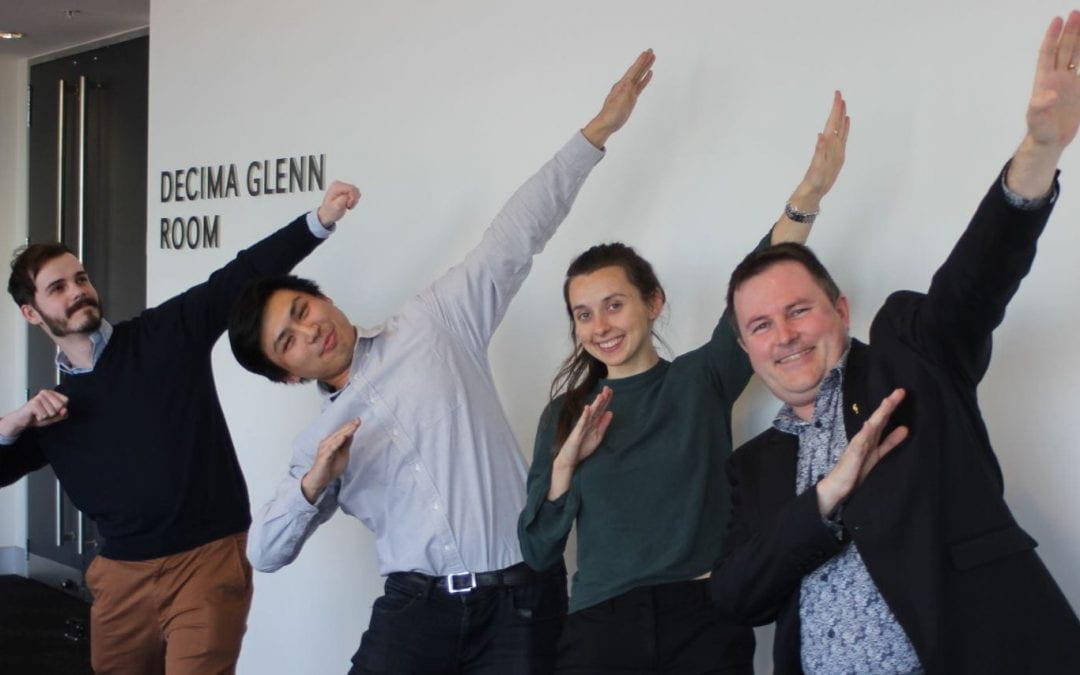
Te Pūnaha Matatini’s link to exciting new start-up
Te Pūnaha Matatini provided much of the impetus for Nebula Data, an innovative new data visualisation company set up by physicists with the help of the University of Auckland Business School’s Centre for Innovation and Entrepreneurship.
Nebula Data, which aims to transform how we understand the media landscape, was co-founded by University of Auckland physics student Georgia Nixon, and Shaun Hendy, professor of physics and director of Te Pūnaha Matatini, in partnership with physics students Toby Bi and Nickolas Morton.
Origins traced to Te Pūnaha Matatini research project
“The idea for Nebula grew out of a Te Pūnaha Matatini research project for the BioHeritage National Science Challenge,” said Georgia.
“They were interested in analysing the concept of “predator free” in New Zealand and wanted to devise a new method to explore the nature of this conversation in the media.
“For this project, we did a large-scale search of organisations and people who were influencing the “predator free” media landscape and built a network to reflect those who were central, those who were peripheral and how this was changing.
“After the success of this project, we were approached by a number of other organisations looking for a similar analysis.”
Team benefits from university’s entrepreneurship programme
Being involved in the University of Auckland Business School’s Centre for Innovation and Entrepreneurship’s Velocity programme in 2018 gave the team the practical business skills they needed to turn their idea into a viable venture. It provided opportunities for mentorship and introductions for support from other organisations such as ATEED and the Icehouse.
“Velocity really sparked my interest in entrepreneurship and helped me imagine what our venture could look like,” Georgia said.
“I think that often scientists aren’t in academia because they are avoiding the commercial world, but because academia offers them the freedom to research what they love. Also, a scientists’ career pathway in academia has been largely determined by the number of publications they’re able to produce.
“Commercialisation has, therefore not been given equal spotlight. Recently, there has been an encouraging rise in getting scientists to not only come up with the research ideas but to also guide it through to an end product.
“It’s great to be part of this process and see your work contributing to a bigger solution by having a positive application. Rather than treating the science as independent to commercialisation, entrepreneurship combines the two and we have been fortunate to find that middle ground with Nebula.”
Several successful projects now completed
Since being involved in the Velocity programme, the team have completed seven major projects spanning a number of industries but all rooted in network visualisations of data, natural language processing text analysis or surveys.
Types of question they have answered include:
- How has the discussion around global warming changed in New Zealand over time?
- What biases in language are used in the media when discussing nutrition vs. agriculture?
- Who the main influencers are in New Zealand’s political media landscape.
Why are Nebula data visualisations useful?
Nebula’s analytical techniques have a huge number of potential applications, in particular deciphering the impact of specific actions such as product market launches in the private sector and new policy initiatives in the public sector.
The type of analysis in critically important for any organisation interested in ways to profile issues and influence behaviours. Their compelling value proposition includes being able to translate complex data sets into visuals that can be more readily understood by decision-makers in organisations.
Interest in Nebula’s data visualisation outputs has increased rapidly since they started. The team has grown to four, but they all continue to wear multiple hats. Georgia is currently pursuing a PhD in Physics at the University of Cambridge, Toby is currently at the University of Auckland as a postgraduate researcher in Physics, and Nickolas is working as a data scientist at Arkturus Business Research.
Nebula’s future plans
In the next year, Nebula plans to expand operations.
“We are starting to pick up clients that give us reoccurring work which gives us more consistency,” says Georgia. “We’re in no rush though; we would like to keep growing at a sustainable level and enjoy the journey”.
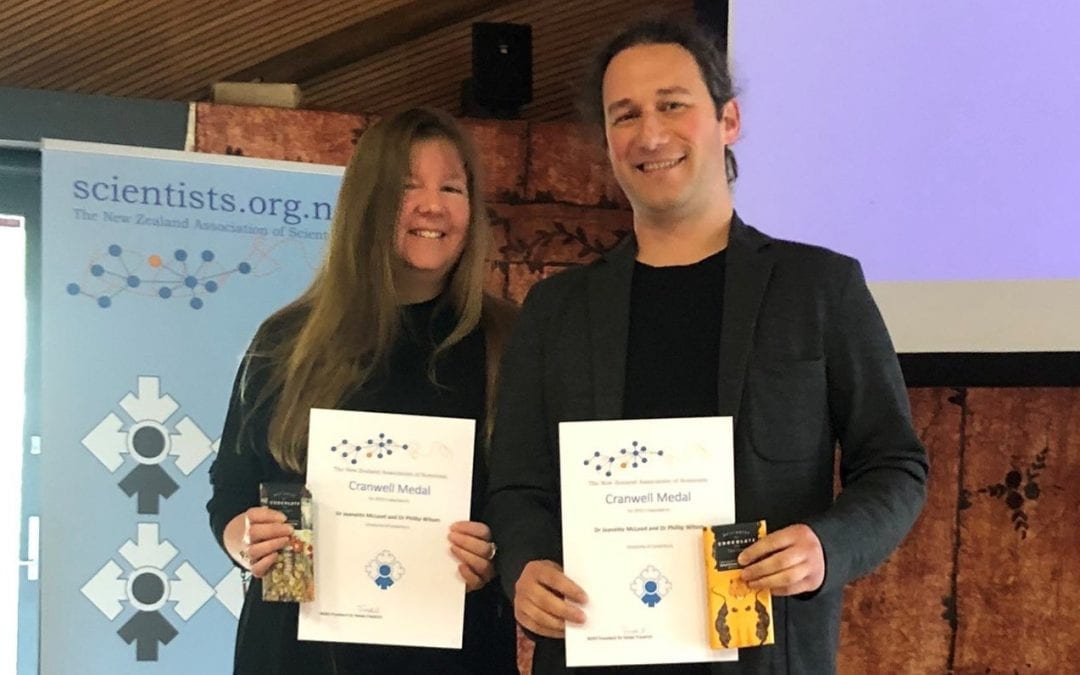
Maths Craft founders win NZAS Cranwell Medal for Science Communication
Dr Jeanette McLeod and Dr Phil Wilson (pictured), Te Pūnaha Matatini investigators and the co-founders of Maths Craft New Zealand, have been awarded the 2019 New Zealand Association of Scientists (NZAS) Cranwell Medal for Science Communication.
Jeanette and Phil, mathematicians from the University of Canterbury, have been on a mission to rid New Zealanders of their maths phobia since launching Maths Craft NZ, a non-profit initiative, in 2016. Maths Craft aims to celebrate the links between mathematics and craft, showing people of all ages how fun, creative and beautiful maths can be, and to demonstrate what it means to think like a mathematician.
As Director and Deputy Director of Maths Craft, Jeanette and Phil have brought maths to the masses. More than 11,000 people from a diverse variety of backgrounds have now attended the regular free Maths Craft festivals and workshops, making it the largest maths outreach programme in New Zealand.
Introducing some of our most loved #MathsCraftNZ props @STEMFestNZ. @PunahaMatatini @UCNZ pic.twitter.com/Aa7MxEUn0t
— Jeanette McLeod (@GraphyJ) October 11, 2019
“With maths often seen as boring or scary, Jeanette and Phil have introduced thousands to a colourful alternative reality – of patterns, grand ideas and art, said Murray Cox, incoming co-director at Te Pūnaha Matatini. “Telling the real story of maths in new and exciting ways that are characteristically their own, Jeanette and Phil have a special ability to engage everyone – from toddlers to teenagers to tīpuna. The award of the Cranwell Medal recognises their unique contribution to New Zealand’s public science scene.”
Priscilla (Cilla) Wehi, incoming co-director at Te Pūnaha Matatini, agreed. “Jeanette and Phil are two extremely talented mathematicians and ingenious communicators who have inspired many people around New Zealand, including me, to learn more about maths,” said Cilla. “I’m thrilled to see their wonderful work recognised with this award.”
Jeanette and Phil have written dozens of freely-available instructional handouts to be distributed at Maths Craft events. Furthermore, they have trained and mentored many volunteers and team members, trained teachers, given public talks, and collaborated with other researchers to determine the efficacy of their approach.
Te Pūnaha Matatini has been a proud supporter of Maths Craft since its inception.
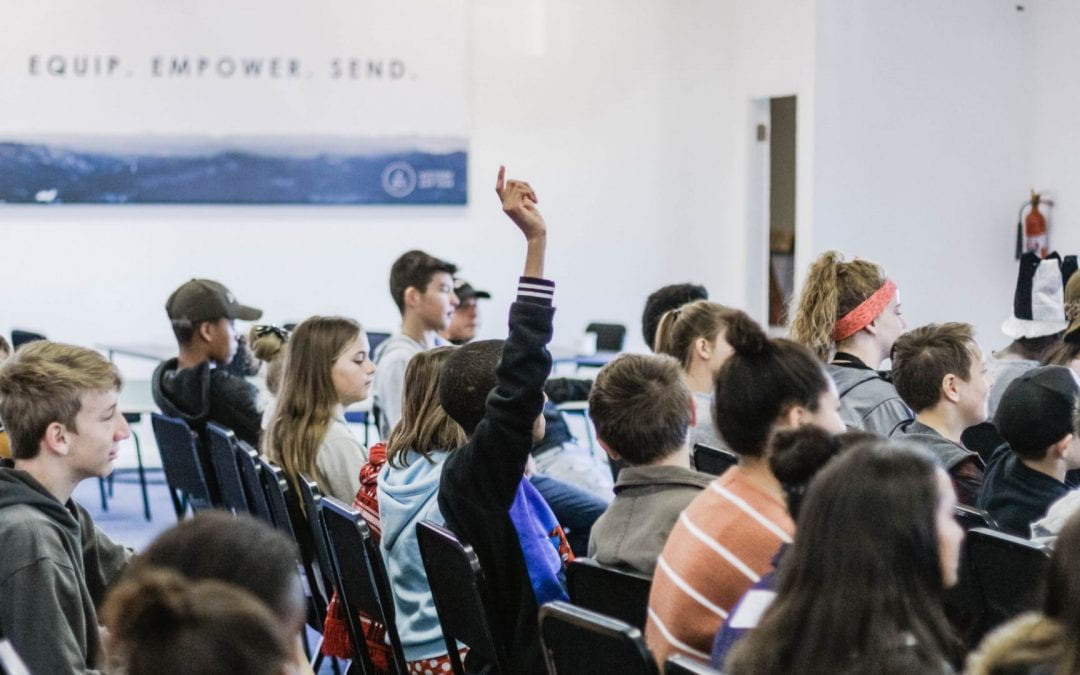
Why high achieving women aren’t continuing in physics
Most high achieving female students studying physics at university choose to discontinue physics as a core subject, not because they aren’t good at physics, but because they pursue further study in the life sciences.
This is one of the key findings of a paper published in PLoS One co-authored by Te Pūnaha Matatini researchers Steven Turnbull, Dr Dion O’Neale and Dr Kirsten Locke, and colleague Dr Frédérique Vanholsbeeck, all from the University of Auckland.
“We found that the majority of high achieving female physics students were actually studying physics for life sciences, which is needed for medicine and bioscience, and not actually for core physics,” says lead author Steven Turnbull, Te Pūnaha Matatini PhD student in the University of Auckland’s Faculty of Education and Social Work.
“More importantly, of those students who do pursue further study in physics, we see higher attrition rates for female students after controlling for achievement level, with the exception of higher achievers.”
“The implications of this are potentially career-limiting for women,” says Dr Kirsten Locke, Te Pūnaha Matatini investigator at the University of Auckland’s Faculty of Education and Social Work.
“Higher achieving women are tending to opt for physics engagement strongly associated with specific career pathways, in ways that differ from their male counterparts”.
Sociological methods uncover reasons behind gender difference
It is well known that female students are under-represented in university physics. However, the reasons for this are not so well understood.
“Importantly, our findings debunk any kind of idea that there’s a lack of high achieving female physics students out there. It’s not that they aren’t doing well in physics or aren’t interested in physics, because they are,” says Dr Dion O’Neale, Te Pūnaha Matatini Principal Investigator in the University of Auckland’s Department of Physics.
One of the unique aspects of this study was the combination of sociological methods (Pierre Bourdieu theory) and quantitative network analysis to understand the contexts in which students were making enrolment decisions.
Out now! @turdbull & I asked the ghost of Pierre Bourdieu why there are so few women in physics & where they go when they leave. Then we wrote about it with @FredVanH & Kirsten Locke. Read it here: https://t.co/p5VPNkHO0v
Thanks @PunahaMatatini & @UoA_Physics for supporting this pic.twitter.com/zmlpN5cimb
— Dion O’Neale (@droneale) September 13, 2019
“Using these tools to frame the results gives one the chance to come up with hypotheses [explanations] as to why things are a particular way or mechanisms for taking the next step,” says O’Neale. “[From a scientist’s perspective], you’ve got something that you can start to test, as opposed to just saying yeah sure there aren’t many women in physics.”
In terms of their data set, the researchers analysed administrative data from 8,905 students enrolled in University of Auckland undergraduate physics courses from 2009 to 2014.
Implications for New Zealand’s education system
Turnbull says the study’s findings have implications for the New Zealand education system, particularly with respect to the way in which physics is presented to students at school.
“We would suggest that work to address gender disparities in physics also needs to be conducted before university level, even as far down as when students start forming their academic identity around 10 or 11 years old. Most importantly, we need to shift attitudes, both inside physics and in society as a whole, so that all students feel like physics is a field where they belong and can contribute.”
The Head of Physics at the University of Auckland, Prof Richard Easther, said he was excited that his Department had hosted this work.
Easther said it had an immediate impact locally as, “It helps us to make evidence-based changes to our own practice, and the ways we present our subject to students.”
Of note, the Physics Department at the University of Auckland was recently recognised by the Astronomical Society of Australia with a Silver Pleiades accreditation for its progress toward building a culture of equity, diversity, and inclusion.






